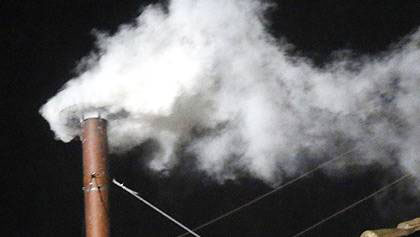On this day, October 16, in 1978, the faithful found themselves in an unusual position for the second time in the same year staring at a chimney above the Sistine Chapel at the Vatican. Cheers and tears broke out as the white smoke appeared, indicating the second papal conclave of 1978 had elected a new pope as the head of the Catholic Church.
The first papal conclave of 1978 elected Pope John Paul I in August of that year to succeed Pope Paul VI, who had died earlier that month. While Pope Paul VI was the head of the Catholic faithful for 15 years, John Paul I only led the church for 33 days before his death. The papal conclave was compelled to convene once again.
The white smoke of October 1978 announced the election of John Paul II. Born in Poland as Karol Jozef Wojtyla, he was the first non-Italian pope since the 16th Century. This exceedingly popular religious leader would go on to become the second longest-serving pope in modern history. In addition to leading his flock, many credit him with influencing the demise of communism in his home country of Poland and throughout Europe. What began as an anxious transition of leadership within the Vatican ultimately proved successful. Overall, most historians rate Pope John Paul II’s leadership positively.
Transitions in faith leadership have existed long before chimneys at the Sistine Chapel emitted white smoke. For more than forty years, Moses led the Israelites. With God’s hand, he led the chosen out of bondage and slavery in Egypt and guided them in the wilderness towards the Promised Land. Moses viewed the land promised to Abraham, Isaac, and Jacob from Mount Nebo but did not enter it. Before he died on the mountain at the age of 120 years old, Moses blessed Joshua as the new leader. Join us the Sunday, October 18, at our 10:00 AM worship as we review the transition of leadership before the Israelites enter the Promised Land.

